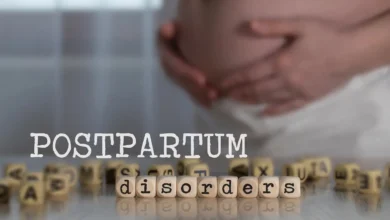There are still some outdated myths about healthcare that persist when it comes to sick children. Here are some old wives’ tales that we should put to rest.
Myth 1
Eek! Eek!
Doctors say that this is not a good idea because putting a child who’s already sick in a cold water bath could cause them to get the chills. Parents are now advised to give a feverish kid a dose of paracetamol, ibuprofen, or a cold washcloth.
Remember that a mild temperature (37-38 °C) is your child’s immune system fighting a virus. If you are concerned about a very high fever (above 40 °C) or a fever in a baby under the age of one year, call your doctor.
Myth 2
This old wives tale about fevers is still believed to be true, but only partially. Your child needs a lot of nutrients when they are sick with a common cold. This will help strengthen their immune system. Fever is no different. If you starve your child of calories, it could make it harder for their body to fight infections.
Bottom line? No matter if your child has a cold, a fever, or both, encourage them to drink lots of fluids and to eat healthy. Don’t worry if your sick child refuses to eat. You’re fine as long as your child is getting nutrients into their system.
Myth 3
This old advice was so popular a few decades back that most of us had scabby knees and wished for a Band-Aid.
In theory, leaving a cut uncovered would ‘air’ it, but research has shown an uncovered injury dries and forms a crust, which hinders healing by creating a barrier of healthy skin cells. This can lead to scarring, infection, or a re-injury. It is recommended that we cover the various cuts and scrapes of our children to avoid exposure to germs and dirt and to stop scarring from forming.

Myth 4
Nope and nope. According to the study, 13 percent of grandmothers still believe they should use butter when scalding.
Doctors advise against using butter or any other greasy product on a burned area. The grease can cause the burn to worsen because it slows the heat release from the skin. Ice can also cause skin damage when used to treat burns. If your child has a minor injury, you should place the affected area under running cool water for 20 minutes. Cold water will numb and stop the burn. Try placing a clean washcloth on the area and running cold, lukewarm water over it if the pain is unbearable.
You May Also Like: Life-Saving Rule for Parents of Sick Children
Myth 5
You’ll be able to tell if you’ve tried it or not that this old advice doesn’t work. Tilting the head back does nothing but encourage the blood to flow down the throat. This is not helpful for children, who may be upset by nosebleeds.
Try pinching the soft area of the nose beneath the bony bridge. Lean them forward while they breathe through their mouth. The blood will come out through the nose, rather than the throat. Also, the pressure applied to the upper nose will help stop the blood flow.
Myth 6
There are many options available to soothe your baby’s teething discomfort. While in the past, mothers would reach for the whisky or brandy bottle, today we have several other options. Please avoid this dangerous remedy. Even a small amount can be harmful to a child.
Modern alternatives include approved teething gums, chewy teething toys, or a cool, wet washcloth.
Myth 7
People did it for real. It was thought that the smoke could warm the ear canals and help to cure the infection. It’s a bad idea. According to the University of Arkansas for Medical Sciences, “blowing smoke in a child’s ears will not speed up the resolution of ear infections.”
Infection behind the eardrum causes middle ear infections. These infections are common among young children and usually heal by themselves or with a small dose of antibiotics. Take your child to the doctor if they complain of ear discomfort.
Ten Cold and Flu Myths Parents Should Know
When your child gets a cold or even the flu, it’s not fun. Nobody wants to see their child feel ill, awaken multiple times during the night, or miss school. It’s no surprise that there are many myths about how to help your child avoid or treat cold and flu viruses.
Research-backed strategies can help you reduce the risk that your child will get sick, and help him or her feel better quicker. There are also many myths. Can you, for example, get sick by being exposed to cold temperatures? Exposure to germs does not make you sick. Is it okay to eat ice cream when you’re sick? Or will that make your symptoms worsen? You can eat it, but it won’t make your cold worse.
We set the record straight on 12 common cold and influenza myths, and offer proven methods to keep you and your family healthy throughout the year.

Myth: Colds Can Be Caught From Being Cold
The majority of people are aware that only the cold virus can cause a cold. Many people believe that going out in the cold without being properly dressed or with wet hair will worsen symptoms. This is not true.
“I believe this is because people notice that people are sicker during colder months, and that is true, “Medical director for infection prevention and control at the Children’s Hospital in Philadelphia.
Myth: You are Not Contagious if You Don’t Have a Fever
Colds can be highly contagious whether or not you have a high fever. Some symptoms, such as a runny or coughing nose, can occur without a fever. Sometimes a fever will appear later on in the illness. However, the virus may have spread by the time the thermometer shows it. 2
Colds in adults and older children are usually accompanied by a low or no fever. Children under the age of five are more likely to run a high fever when they have a cold. Doss and Don’ts of Fighting a Fever
Myth: The Only Way to Stay Healthy is To Avoid Sick People
It’s possible to stay away from sick people, but this is not foolproof. People can be infectious without displaying any symptoms, as Myth #2 explains.
The flu vaccine is the most effective way to prevent the flu, according to experts. The Advisory Committee on Immunization Practices, which advises the CDC on vaccine matters, recommends that all people aged 6 months and older receive an annual influenza vaccination.
You May Also Like: 7 Warning Signs of Childhood Asthma
Myth: The Flu Vaccine Causes the Flu
Flu vaccines don’t cause the flu. According to the CDC, the viruses contained in flu vaccines have been “inactivated” (or killed as they say). This means that the virus won’t be able to cause infection.
A flu shot can cause mild symptoms, which may feel like flu-like symptoms. Dr. Coffin says that people often mistake the achy symptoms that may follow a flu shot for the flu.
Myth: You Don’t Need to Get Vaccinated Every Year
You won’t benefit from the protection you got against the flu the previous year. The primary strains of flu that are prevalent each year change. 8 This is why the vaccines are updated annually.
The Doctor explains that the flu vaccine’s protection diminishes with time. Even if you got a flu shot the year before, it may not be able to protect you against the strain of the virus you are exposed to.
Myth: It’s Too Late if You Don’t Get a Flu Shot by January
Getting your annual influenza vaccine is beneficial whenever you get one. “It is never too late,” She said.
The flu season peaks around February, but it can last until May. As no one can predict the exact date when flu season will end, it is important to get vaccinated for yourself and your children as soon as possible. You can find a list in your state or local department of health where you can still get the vaccine.

Myth: You Can Get Nasal Spray Instead of Shots If You Hate Shots
FluMist is only recommended for healthy adults aged 2 to 49 years who are not pregnant. The CDC recommends FluMist to healthy people ages 2 to 49 who are not pregnant.
- Aspirin for children or adolescents
- Children under 5 years of age with a history of recurrent wheezing and asthma
- People with heart or lung diseases, such as asthma and reactive airway disease, are at risk of complications due to influenza.
- Patients with diabetes or kidney disease
- People who have illnesses that can weaken their immune systems or those who take medication that can do so
- People with severe allergies to chicken eggs or any component of the nasal spray vaccination
- Pregnant people
Bottom line: Before choosing the best vaccine for yourself or your child, consult a doctor.
Myth: You Will Be Immune To The Flu if You Get It
Every year, there are several different flu strains. You may develop immunity to one strain of flu for a few weeks after infection, but you’re still susceptible to other strains. You can get the flu more than once in a year.
She says that having one type of flu doesn’t protect from colds, COVID-19, or a virus that causes pneumonia.
Myth: You Could Get the Flu From a Cold
Both the flu and the common cold are caused by viruses. A cold cannot “morph” into flu. It can be difficult to distinguish between the two illnesses because they have similar symptoms.
A cold is usually worse than the flu, which has more severe symptoms, such as a fever, body pains, extreme fatigue, and a dry cough. Colds can cause a runny nose or a stuffy nose,b ut are less likely to lead to serious complications such as pneumonia, bacterial infection, or hospitalization.
Myth: The Flu isn’t That Serious
Most people with the flu have a milder case and don’t require medical attention. They usually recover completely in less than two weeks. 12
The CDC warns, however, that flu complications can be fatal. The CDC estimates between 12,000 to 52,000 deaths and 710,000 hospitalizations each year due to the flu.
Conclusion
It’s important to dispel outdated myths about childcare that could be harmful for children’s wellbeing. Some traditional remedies are not backed by science and can even be harmful. We can take informed decisions by focusing on practices that are based on scientific evidence. By embracing reliable information, we can ensure that they get the best possible care and foster a healthier tomorrow.



